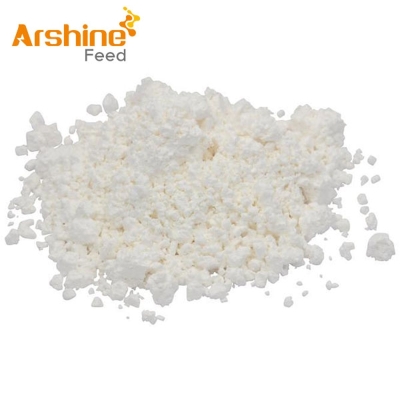Development characteristics and trend of sheep industry at home and abroad
-
Last Update: 2008-11-03
-
Source: Internet
-
Author: User
Search more information of high quality chemicals, good prices and reliable suppliers, visit
www.echemi.com
Introduction: at present, mutton sheep industry is developing rapidly in Oceania, America, Europe and some African countries, and the production and consumption of mutton, especially lamb, are increasing significantly in the world Mutton sheep industry has the characteristics of fast turnover, less investment and high efficiency It has become one of the important ways to maintain the sustainable development of animal husbandry under the background of resource shortage and increasing demand for livestock and poultry products This paper also carefully analyzes the shortcomings and development advantages of mutton sheep production in China, and puts forward some suggestions for the development of mutton sheep industry in China, such as adjusting the production direction and product structure of mutton sheep industry in time, researching and popularizing the advanced and practical comprehensive supporting technology of mutton sheep industry Key words: the history and the current situation of sheep & goat breeding in China were examined in this study The conclusions are as followings.: The sheep & goat husbandry, which has a long history and play an important role in animal husbandry, has been improved Due to low inputs and low level of technology used, its economic efficiency was generally very low, compared to the other countries of the world Basing on the results of this study, as well as the sheep production circumstances of home and abroad, it is suggested that the high quality meat sheep industry should be developed by the means of application practice technologies, utilization of research results, establishing meat sheep model regions On the boundary of centuries Keyword: sheep and goat husbandry, survey, suggestion sheep industry has a very close relationship with the development of national economy and the improvement of people's living standards Especially in the past 10 years, China's sheep industry has developed rapidly, achieved remarkable achievements, and its proportion in the GDP is increasing day by day However, compared with the developed countries, there is still a big gap in breed improvement, product quality, supporting facilities and economic benefits This paper analyzes the development situation and characteristics of domestic and foreign sheep industry at the turn of the century, and discusses the development direction and problems to be solved The general situation and characteristics of sheep industry in foreign countries have been closely related to human life, but with the development of the times, the requirements of human beings for sheep industry have changed accordingly In the 16th-17th century, the appearance of Spanish Merino sheep and its spread all over the world, and in the early 18th century, people pursued high-grade wool materials, which made the sheep industry pay attention to wool production, cultivated a large number of wool sheep, especially fine wool sheep, and formed the world sheep industry mainly focusing on fine wool sheep In the 19th century, wool production system with regional economic characteristics, regional natural resource characteristics and national characteristics was basically formed in the world, which promoted the formation of wool sheep industry For example, Australia's fine wool sheep industry began in the late 18th century, and has developed into a major agricultural industry in the 19th century In the 20th century, the number of sheep and wool production ranked first in the world for many years, known as the "sheep kingdom" From the 18th century to the 19th century, lamb production began to rise In the 1960s, the sheep industry began to develop towards multi polarization The mutton industry developed rapidly in Oceania, America, Europe and some African countries The production and consumption of mutton in the world increased significantly Moreover, mutton in many countries changed from quantitative growth to qualitative growth, producing high-quality mutton with high lean meat and low fat content, Especially lamb meat, and carried out the relevant breeding work From 1987 to 1997, the number of sheep in stock and the output of products in the world are shown in Table 1 Table 1 The number of sheep in stock and the output of products in the world (omitted) from 1987 to 2003 unit: 10000, × 104t,%, kg / piece note: the data source is from http:// main development characteristics of wool direction 1.1.1 the number of sheep in stock in the world has declined steadily, and the number of sheep in stock in many countries has declined significantly In 1987, the number of sheep on hand was 1157.643 million, while in 2003, it was 1028.594 million, a decrease of 8.78%; in Australia, New Zealand, France and the United States, the number of sheep on hand was reduced by 5-30% 1.1.2 the world's wool production continues to decline, and Oceania's wool production still accounts for a large proportion in the world For example, in 2003, the world's wool production was only 69.8% of that in 1987; in 2003, the number of sheep in stock in Oceania was 142.915 million, 13.89% of that in the world, and 77.21 × 104t of raw wool was produced, accounting for 36.11% of that in the world; on the contrary, in 2003, the number of sheep in stock in Asia was 453.549 million, 44.0% of that in the world, while 709800 t of raw wool was produced, only It accounts for 33.1% of the world's total wool, 1.1.3 the average wool production of the sheep in stock has been continuously reduced, while the average wool production of the sheep in stock in Oceania is still very high In 1987, the average wool yield of the sheep in the world was 2.64kg, compared with 2.08kg in 2003, down 21.2%; in Oceania, the average wool yield of the sheep in the world was 5.57kg, compared with 2.55kg, 1.97kg, 1.94kg, 1.73kg and 1.09Kg in South America, Europe, North America and Central America, Asia and Africa, respectively 1.1.4 many countries in the world began to produce high-quality wool and carried out relevant breeding work Recently, great changes have taken place in the requirements of wool quality One of the characteristics is that the wool market puts forward higher requirements for wool fineness In Australia, the wool production is almost all coarse fine wool, that is, the average fiber diameter is more than 19 μ m, but the wool below 19 μ m is greatly increased In 1988 / 89, such fine hairs accounted for only 4.4%, in 1996 / 97, 14%, and in 1998 / 99, 20% To cultivate 80-90 fine wool sheep varieties and study the thinning technology in fine wool processing, that is, 18 μ m becomes 16 μ m, and the formation of no curl, strong luster, silk like fine wool has risen in Australia 1.2 main development characteristics of meat use 1.2.1 the number of sheep on the market, the output of mutton and the per capita amount of mutton in the world are increasing year by year 1.2.2 the increase of mutton production is not only reflected in the output, but also reflected in the structure of mutton production, that is, the rapid increase of fat lamb production For example, France's lamb accounts for 75% of the total lamb production, Australia for 70%, Britain and the United States for 94%, and New Zealand for 80%; 1.2.3 in developed countries, the production of fat lambs is improved, large-scale, specialized and intensive Foreign countries with high mutton production include Britain, France, Russia and Romania in Europe, the United States, Brazil and Mexico in America, Oceania, China, India and Pakistan in Asia, etc A number of countries in the world have shifted the focus of sheep industry to mutton production, made full use of their own conditions, adopted high-tech and intensive feeding methods, and established their own mutton production system The increasing consumption of mutton in people's meat not only stimulates the change of sheep production direction, but also makes mutton production change to intensive and industrialized direction, which has aroused people's attention to multiple sheep varieties The main ways of utilization are: to cultivate new multiple products with higher production performance by using varieties of Finnish sheep (finnsheep), Romanov and other resources In order to produce fat lambs, the multiple breeds were used for extensive economic hybridization For example, in New Zealand, in 1997, there were 447000 sheep on the stock, producing 52.4 × 104t of mutton, with an average carcass weight of 17kg, and the rate of export was 63.2% According to the data of nzba (New Zealand breeding Association) in 1998, there are 29 sheep breeds raised in New Zealand at this stage, which are generally special breeds for meat or meat and wool with fast growth, early maturity, good meat and wool performance and high reproduction rate Among them, 27.7 million Romney sheep breeds, accounting for 55.74% of the total number of sheep in the country, coopwarth and perendale sheep breeds )24.9%; pay attention to economic hybridization, make use of the advantages of hybridization, and develop towards multiple hybridization, select parents with large body, early maturity, multiple births and good meat performance for economic hybridization In 1991, the market demand for carcasses was not only thin, but also more meat, so New Zealand breeding efforts were made to produce larger carcasses of more than 15kg, fat content of 24%, eye muscle area of 11.0cm2, GR value of 8.0mm Nanqiu and Suffolk were used as male parents, and Romney, perenday, copuohua and coryday were used as female parents for economic hybridization By 1994, 52.7 × 104t lamb had been produced 95% lamb and 55% adult lamb were exported, accounting for 44% of the world's lamb exports In Australia, according to the market development demand, fat lambs are produced by three-way cross of Merino × border region Lester × short wool sheep for meat (such as hornless Taosaite) However, due to different natural conditions in different regions, the selection of hybrid male varieties is not the same It produces 40% of its mutton for the domestic market and exports to the Middle East and Japan Now, as a result of the Uruguay negotiations, the difficulty of mutton export has increased, and the domestic market has become the main market, accounting for about 85% of the total mutton In the United States, meat is the main feature The sheep were weaned from 3-4 months old and fattened to 6 months old, so that the slaughter live weight was 40-45kg The mode of production is grassland reproduction in mountainous areas and intensive fertilization in plain areas, so as to give full play to regional advantages The number of sheep is 6.44% of that in Australia, while the output of mutton is 17.57% Fattening lambs are divided into fat lamb and feeder lamb The former is the milk lamb fattened and sold before the normal weaning day; the latter is the lamb fattened or grazed after weaning, which is the main way to produce lamb After fattening, it reaches the standard of superior lamb: carcass weight 20-25kg, eye muscle area not less than 16.2cm2, fat layer thickness 0.5-0.76cm Due to the high degree of improved breed, we pay attention to the utilization of Suffolk and Hampshire mutton sheep varieties, adopt the fine feeding mode and the leading enterprise's drive, and the sheep raising industry has high production efficiency 1.3 the main methods adopted by all countries to develop mutton sheep industry 1.3.1 introduce and cultivate sheep varieties suitable for domestic mutton production Since the 1960s, the main objectives of breeding have been focused on the early sexual maturity of ewes, oestrus throughout the year, high lambing rate, strong lactation, rapid growth and development of lambs, high feed reward, and good meat performance, and attention has been paid to the combination of mutton and wool production, such as colbred in England and East Freund in Germany Friesian) is a hybrid of three British breeds (Leicester, Keren forest and Dorset with horn) It has oestrus throughout the year, lambing rate of 200-250%, high milk yield, good meat performance and wool quality, which is a breakthrough in breeding Since the 1980s, New Zealand has purposefully introduced texel, Suffolk and other kinds of sheep to improve the production level of high-quality lamb; in recent years, landcorp has carried out the production and cultivation of super lambs, that is, to mate more than 500000 young ewes raised in the company ' According to the growth rate, lean meat rate and eye muscle size, lambs with high lean meat rate were selected and fattened in excellent pasture 1.3.2 parents with large body, early maturity, multiple births and good meat performance were selected to carry out economic hybridization extensively The United States, the United Kingdom, New Zealand, Australia, Argentina and other countries,
This article is an English version of an article which is originally in the Chinese language on echemi.com and is provided for information purposes only.
This website makes no representation or warranty of any kind, either expressed or implied, as to the accuracy, completeness ownership or reliability of
the article or any translations thereof. If you have any concerns or complaints relating to the article, please send an email, providing a detailed
description of the concern or complaint, to
service@echemi.com. A staff member will contact you within 5 working days. Once verified, infringing content
will be removed immediately.







